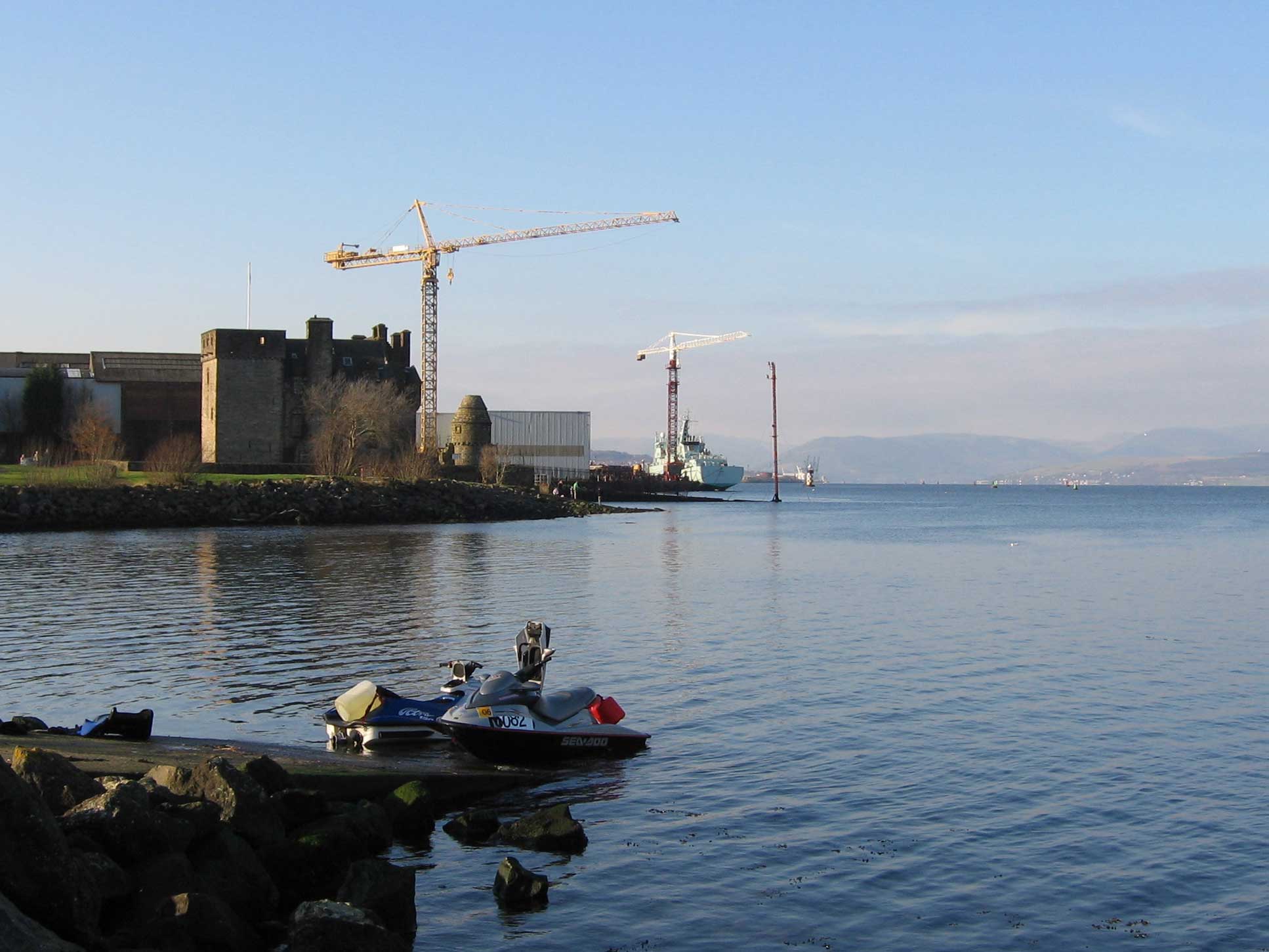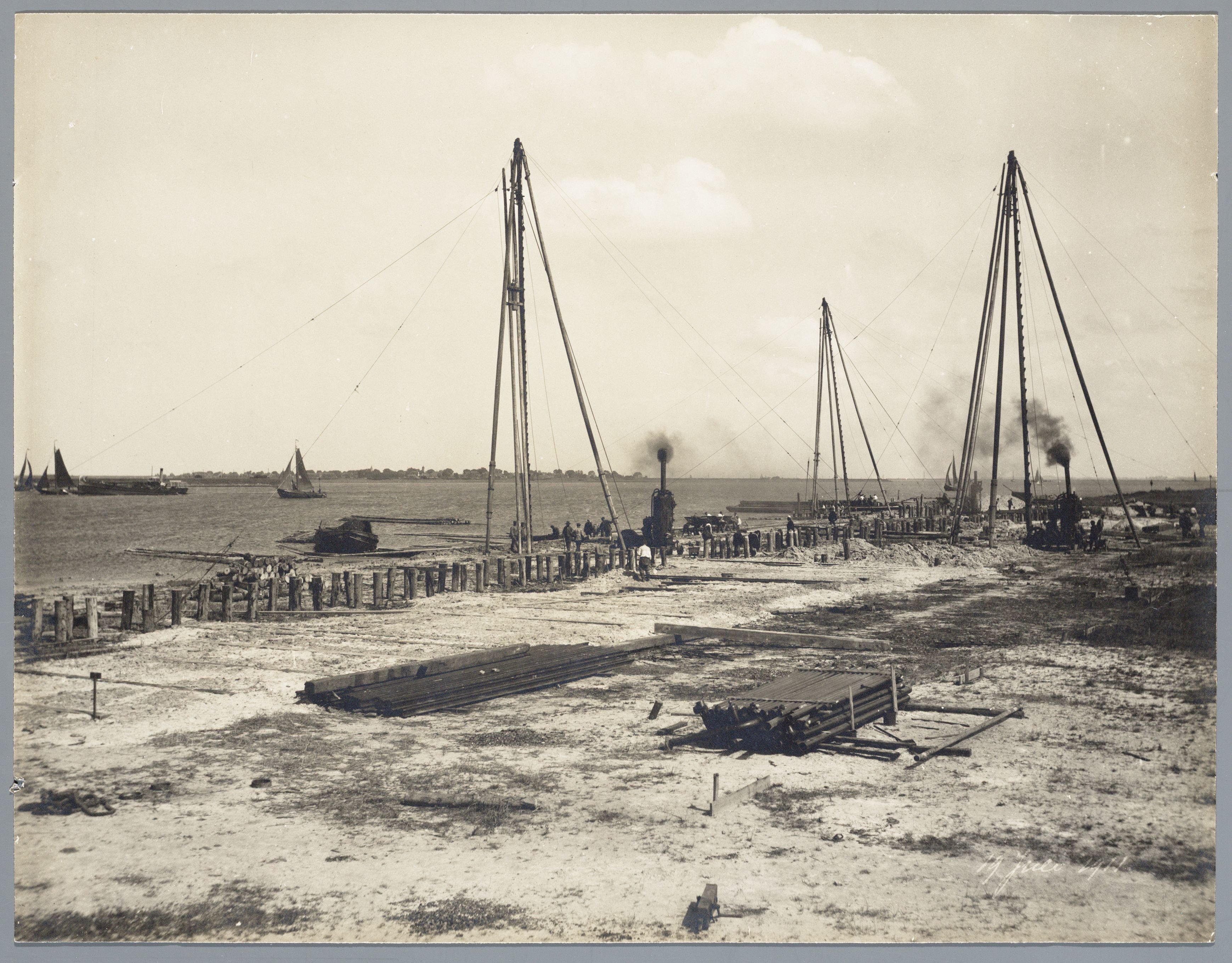|
Surabaya Dock Of 3,500 Tons
Surabaya Dock of 3,500 tons was a floating dry dock which served in Indonesia from about 1913 till about 1956. Context Surabaya is on Madura Strait at the mouth of the Kali Mas river. In the natural situation, ships that wanted to trade with the city could safely anchor off the coast, so smaller ships could transload goods to the city proper. The good connections to the interior that the river provided made Surabaya a good location for a harbor. In the mid 1830s the Dutch Navy decided to locate her main base in the Indies at Surabaya. In the 1840 this led to the construction of the Maritime Establishment (Dutch: Maritiem Etablissement) just east of the river. Center piece of the base were a wet dock called basin, where ships could attach to a quay, and a dry dock. From about 1909 the Dutch government then started the construction of a modern harbor known as the Port of Tanjung Perak (Dutch: Tandjong Perak). It also wanted to have a modern dry dock facility in the new harbor. The ... [...More Info...] [...Related Items...] OR: [Wikipedia] [Google] [Baidu] |
William Hamilton And Company
William Hamilton and Company was a British shipyard in Port Glasgow, Scotland. The company was bought by Lithgow Ltd., which later became Scott Lithgow and was nationalised as part of British Shipbuilders in 1977. During the Second World War the company built several vessels for the Royal Navy, including s. Hamiltons built the ''Pacific Star'' for the Booth Steamship Company Ltd, which was leased to the Blue Star Line as Blue Star's only tanker. Some of the merchant ships that Hamiltons built in the Second World War were armed as CAM ships, including and . Ships built by William Hamilton Co Ltd , - , , , 1877 , , Sank after collision 1887 , - , , , 1899 , , Sank 1909 , - , , , 1946 , , Sank after catching fire, 1969 , - , , , 1960 , , Stricken 1993 , - , , , 1891 , , Sank 1918 , - , , , 1916 , , deleted 1940 , - , , , 1959 , , Scrapped 1986 , - , , , 1898 , , Sunk by torpedo 1917 , - , , , 1911 , , Sunk by torpedo 1917 , - , ''Antares'' , , ... [...More Info...] [...Related Items...] OR: [Wikipedia] [Google] [Baidu] |
Port Glasgow
Port Glasgow ( gd, Port Ghlaschu, ) is the second-largest town in the Inverclyde council area of Scotland. The population according to the 1991 census for Port Glasgow was 19,426 persons and in the 2001 census was 16,617 persons. The most recent census in 2011 states that the population has declined to 15,414. It is located immediately to the east of Greenock and was previously a burgh in the county of Renfrewshire. Originally a fishing hamlet named Newark, Port Glasgow came about as a result of large ships being unable to navigate the shallow and meandering River Clyde to the centre of the city of Glasgow. As a result, it was formed as a remote port for Glasgow in 1668, and became known as 'New Port Glasgow', which was shortened to 'Port Glasgow' in 1775. Port Glasgow was home to dry docks and shipbuilding beginning in 1780. The town grew from the central area of the present town and thus many of the town's historic buildings and people are found here. Port Glasgow expanded up ... [...More Info...] [...Related Items...] OR: [Wikipedia] [Google] [Baidu] |
Surabaya Dock Of 14,000 Tons
The Surabaya Dock of 14,000 tons was a floating dry dock which served in the Dutch East Indies and Indonesia from 1916 until at least the late 1950s. Context A large floating dry dock for the Dutch East Indies In 1900, there were three floating dry docks in the Dutch East Indies. The biggest was ''Onrust Dock of 5,000 tons'', stationed at Surabaya. A relatively new dry dock at the time was ''Tanjung Priok Dock of 4,000 tons'' at Tanjung Priok, Batavian Republic, Batavia. The old ''Onrust Dock of 3,000 tons'' was stationed at Sabang, Aceh, Sabang at the western extremity of the archipelago. The two dry docks on Java could service most ships visiting the island. They were capable of lifting all ships that the Dutch navy had, and it was thought that they would also be able to lift those which the navy would acquire in the foreseeable future. The ''Onrust Dock of 5,000 tons'' had been commissioned and stationed at Onrust Island in 1880. In 1883, the dock lifted of 5,400 tons di ... [...More Info...] [...Related Items...] OR: [Wikipedia] [Google] [Baidu] |

